
Clavicytherium
 The claviciterium, or claviciterium (French clavecin vertical; Italian cembalo verticale, Middle Latin clavicytherium – “keyboard cithara”) is a type of harpsichord with a vertical arrangement of the body and strings (French clavecin vertical; Italian cembalo verticale).
The claviciterium, or claviciterium (French clavecin vertical; Italian cembalo verticale, Middle Latin clavicytherium – “keyboard cithara”) is a type of harpsichord with a vertical arrangement of the body and strings (French clavecin vertical; Italian cembalo verticale).
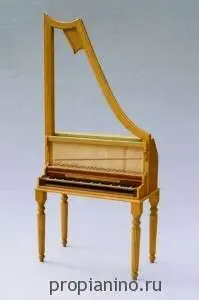
Like the piano, the harpsichord took up a lot of space, so a vertical version of it was soon created, which was called the “claviciterium”. It was a neat, compact instrument, a kind of harp with a keyboard.
For the convenience of playing, the keyboard of the claviciterium retained a horizontal position, being in a plane perpendicular to the plane of the strings, and the game mechanism received a slightly different design for transmitting movement from the back ends of the keys to the jumpers, which were also placed in a horizontal position.
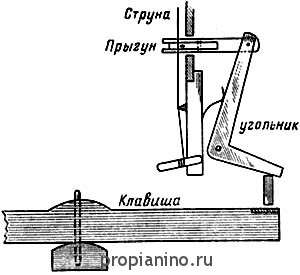
 The front cover of the claviciterium usually opened when played, the sound flowed freely and became stronger than other forms of plucked keyboard instruments of similar sizes.
The front cover of the claviciterium usually opened when played, the sound flowed freely and became stronger than other forms of plucked keyboard instruments of similar sizes.
The claviciterium was used as a solo, chamber-ensemble and orchestral instrument.
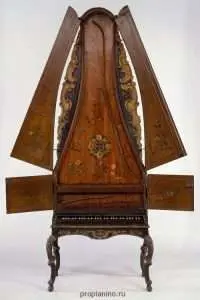
Traditionally, the instruments of the 17th and 18th centuries were richly decorated with paintings, carvings and inlays.

One of the most common types of painting was biblical scenes depicting musical instruments.
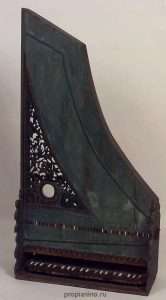
For example, in the minds of Europeans of the Middle Ages and the Renaissance, the harp was strongly associated with the biblical King David, the legendary author of psalms. In paintings, he was often depicted playing this instrument while he was tending cattle (David was a shepherd in his youth). Such an interpretation of the biblical story brought King David closer to Orpheus, who tamed animals with his playing on the lyre. But more often David can be seen playing music on the harp in front of the melancholy Saul: “And Saul sent to Jesse to say: let David serve with me, for he won favor in my eyes. And when the spirit from God was on Saul, then David, taking the harp, played, and Saul became more joyful and better, and the evil spirit departed from him ”(1 Kings, 16: 22-23).
A wonderful compositional solution was used by an unknown Bohemian artist of the XNUMXth century, who decorated the claviciterium with his painting, where he depicted King David playing the harp. At the moment, this instrument is in the New York Metropolitan Museum of Art.
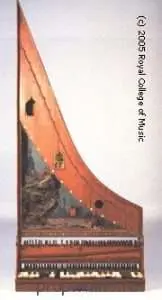
The oldest surviving claviciterium is kept at the Royal College of Music in London. Estimated to be around 1480 production. It was supposedly made in Southern Germany, in Ulm or Nuremberg.





